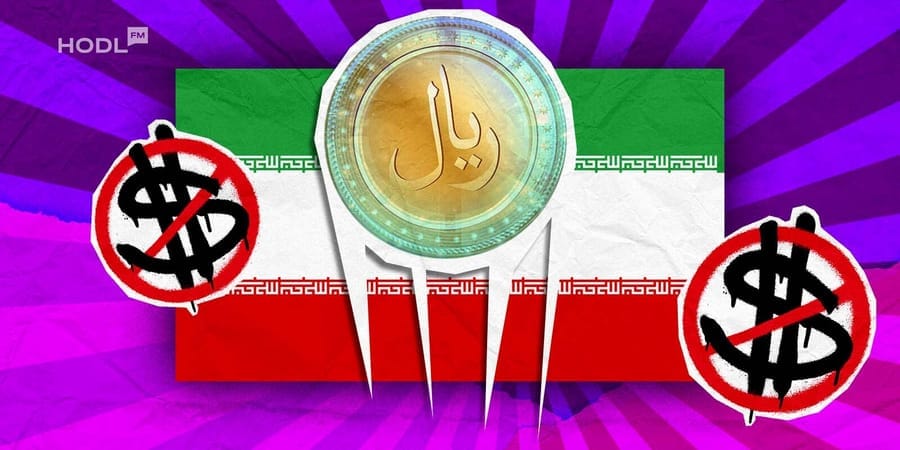Iran’s Central Bank has officially revoked Ayandeh Bank’s operating license, marking the collapse of one of the country’s largest private lenders. The decision, announced Thursday, comes amid worsening economic conditions, chronic inefficiency, and the biting effects of international sanctions that have crippled the nation’s financial sector.
“Despite all the efforts made, this bank could not be placed on the path of reforms as desired by the central bank,” Central Bank Governor Mohammadreza Farzin said, according to official media Iran Insight.
Farzin revealed the full extent of the institution’s troubles, citing 5.5 quadrillion rials ($5.1 billion) in accumulated losses, 3.13 quadrillion rials ($2.9 billion) in overdrafts, and a negative 600 percent capital adequacy ratio. The figures point to severe mismanagement and structural weaknesses within Iran’s banking system, already strained by decades of sanctions.
Depositors to be transferred to Melli Bank
Iran’s Economy Minister Ali Madanizadeh assured customers that all deposits from Ayandeh Bank will be safeguarded. The accounts are being transferred to state-owned Bank Melli Iran with branch rebranding already underway. Depositors are expected to gain full access to their funds by October 25.
“Serious measures for banks that did not comply with regulations were necessary, but in the past, legal shortcomings prevented decisive action,” Madanizadeh explained.
He also noted that the accumulated losses will be covered by Ayandeh Bank’s main shareholders, though no additional details were provided.
By Saturday, long lines had formed outside several former Ayandeh branches in Tehran as anxious customers waited for updates. Police presence was visible, and footage aired on local outlets confirmed the state’s control of the transition.
“The transfer from Ayandeh Bank to Melli Bank is now complete,” Melli director Abolfazl Najarzadeh said on state television.
Collapse reveals structural weakness in Iran’s banking system
Founded in 2012, Ayandeh Bank operated 270 branches nationwide, including 150 in Tehran. Over the years, it grew rapidly through mergers with smaller institutions like Tat Bank and Ansar Financial and Credit Institute. Yet, its aggressive expansion was paired with mounting debt and controversial investment practices.
Central Bank official Hamidreza Ghaniabadi told IRNA that “bad debts” had prompted the collapse.
“More than 90 percent of Ayandeh Bank’s funds were allocated either to parties related to the bank or to projects managed by the bank itself,” he said, noting that these loans “were never repaid.”
Among Ayandeh’s ambitious projects was the Iran Mall, one of the world’s largest shopping complexes, featuring cinemas and an ice rink. The project became a symbol of excess within a banking system already straining under mismanagement and sanctions.
According to the Tasnim news agency, at least five other banks, Sarmayeh, Day, Sepah, Iran Zamin, and Melal, are facing similar financial difficulties. Earlier this year, the Central Bank cautioned that eight banks in total risk dissolution if they fail to implement substantial reforms.
Sanctions and inflation exacerbate economic stress
The banking crisis unfolds as Iran grapples with renewed sanctions. The United Nations reimposed measures in September following stalled nuclear negotiations, intensifying economic isolation. Sanctions have blocked access to global banking networks, restricted U.S. dollar transactions, and eroded public confidence in the rial. Weak governance, coupled with political and economic uncertainty, has intensified Iran’s financial instability.
Global implications and crypto parallels
Interestingly, failures in traditional banking have historically spurred innovation in the crypto sector. Satoshi Nakamoto’s motivation for creating Bitcoin partly stemmed from frustration over government bailouts during financial crises. Similarly, in early 2023, the collapse of U.S. regional institutions such as Silicon Valley Bank and Signature Bank led to a surge in Bitcoin’s price as confidence in conventional banking waned.
While Iranian banks face mounting fragility, other global developments reflect a pivot toward digital finance. In August, the U.S. government began drafting an executive order that would prohibit banks from discriminating against crypto companies, signaling what Binance founder Changpeng Zhao (CZ) called “a global breakthrough for crypto in the U.S.”
According to investor Paul Barron:
“This would force every major bank to embrace crypto companies. Get ready for the floodgates to open, institutional money is coming.”
If enacted, such policy changes could accelerate stablecoin integration and adoption across traditional banks, a shift that crypto advocates believe might redefine the relationship between banking and blockchain on a global scale.
Outlook
For Iran, however, the road remains uncertain. With Ayandeh Bank now dissolved, and others teetering on the brink, authorities face mounting pressure to overhaul the financial system while maintaining public trust. As sanctions deepen and alternative financial systems, like digital assets, gain ground globally, Iran’s ability to stabilize its banking sector may well determine the trajectory of its broader economy in the coming months.

Disclaimer: All materials on this site are for informational purposes only. None of the material should be interpreted as investment advice. Please note that despite the nature of much of the material created and hosted on this website, HODL FM is not a financial reference resource, and the opinions of authors and other contributors are their own and should not be taken as financial advice. If you require advice. HODL FM strongly recommends contacting a qualified industry professional.





